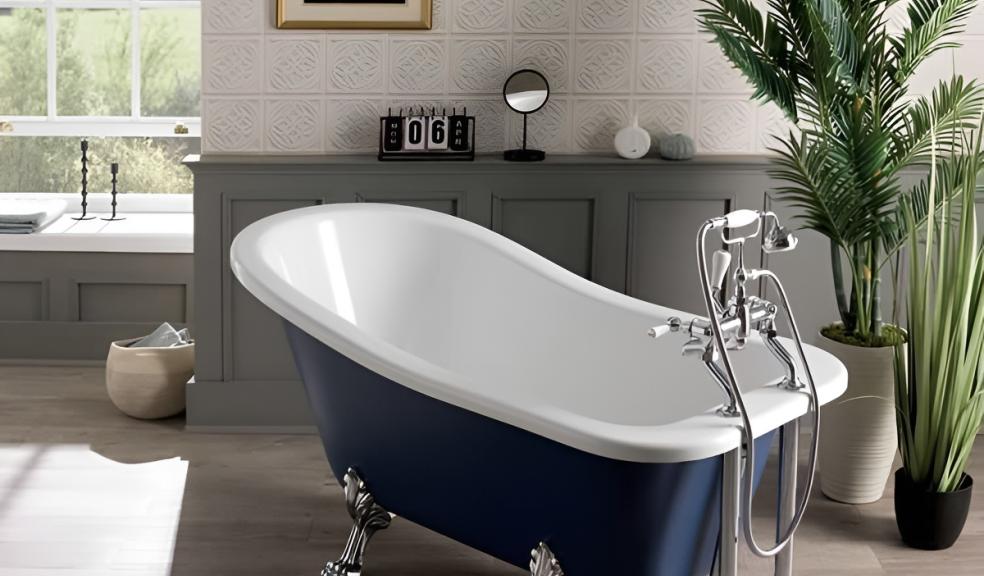
These houseplants remove mould from your bathroom
As spring cleaning season is underway, searches for 'mould in bathrooms' have surged by 64% in the past month1, reflecting a growing concern among homeowners.
In response to this, luxury bathroom supplier Sanctuary Bathrooms has revealed how houseplants could help to reduce mould in your bathroom.
Bathrooms offer ideal conditions for plants with their elevated moisture levels from hot baths and showers, creating a high-humidity environment perfect for greenery. However, this high moisture also makes bathrooms prone to mould growth. Plants can help deter mould by improving air quality and regulating humidity levels, creating an environment less conducive to mould growth.
And with interior trends like biophilia gaining popularity, focused on bringing elements of the outside in, incorporating plants into bathroom decor not only serves a practical purpose, but is aesthetically pleasing too.
-
Air Plants
Air Plants are exceptionally low maintenance and thrive in humid bathroom environments, requiring temperatures between 10-32 degrees and moderate humidity levels of 40-60% to grow. These happen to be optimal conditions for dampness and mould, so adding air plants can help by controlling moisture levels and humidity.
-
Spider Plants
Spider Plants are ideal for bathroom shelves and cabinets, as they look great in smaller pots and tolerate fluctuating temperatures and low light. They work to effectively purify the air, regulate humidity levels and remove harmful toxins and pollutants. Pretty much impossible to kill, they’re the perfect low-maintenance bathroom plant.
-
Ferns
Ferns thrive in bathrooms due to their love for high humidity and ability to grow in low light, making them ideal plants for such steamy conditions. They efficiently absorb excess moisture from the air, helping to reduce dampness and mould growth.
-
Bamboo
Bamboo's natural water resistance makes it an ideal bathroom plant, thriving in humid conditions where other plants may falter. Requiring little light to grow, it’s a great plant for smaller bathrooms and WCs.
-
Peace Lilies
Peace lilies are ideal bathroom plants, as they thrive in low light and adapt well to fluctuating humidity levels. They are excellent choices for removing mould, as they purify air and absorb mould spores. Their elegant white flowers also elevate the tranquillity and aesthetics of bathroom decor.
-
Aloe Vera
Aloe vera thrives in high humidity, akin to its tropical origins. The plant will get enough water from steamy bathroom environments, minimising the need for manual watering, and its preference for bright, indirect light makes it an adaptable choice for bathrooms with limited space. With amazing air-purifying power, aloe vera is an excellent plant for reducing mould growth in bathrooms.
-
Orchids
Orchids thrive in bathrooms, mimicking their tropical habitat with frequent watering and misting. They add elegance and a pop of colour to a bathroom, while they work to improve air quality and reduce humidity, helping to minimise mould growth.
-
English Ivy
English Ivy thrives in wet and humid bathrooms, as they need to be watered frequently. Although they grow best in bright light, they can tolerate low light and various temperatures. This makes them an ideal choice for easy-care bathroom greenery, and with their ability ro remove airborne nasties, are an excellent plant for removing mould.
-
Snake Plants
Snake plants thrive in high humidity and low light conditions, making them perfect for smaller bathrooms with limited light. They help to purify air by removing moisture, mould spores and unpleasant ingredients found in bathroom cleaning products. They require minimal care and help to enhance decor with their sleek appearance.
James Roberts, Director of Sanctuary Bathrooms said: “When selecting the ideal plant for your bathroom, assessing the space is essential. Bathrooms with minimal natural light, such as ensuites, WC, or cloakroom bathrooms, require plants that thrive in low-light conditions. Conversely, larger bathrooms, typically found in homes with multiple residents like a family bathroom, benefit from plants that require more light.
“In smaller bathrooms, or when looking to spruce up shelves or vanity spaces, opting for smaller potted plants can add a touch of greenery without overwhelming the limited space. By carefully assessing your bathroom's lighting, size, and humidity levels, you can select the perfect plant to enhance the ambiance of your space.”
For more information on the best plants for your own personal sanctuary please visit: https://www.sanctuary-bathrooms.co.uk/journal/the-best-plants-for-your-bathroom









